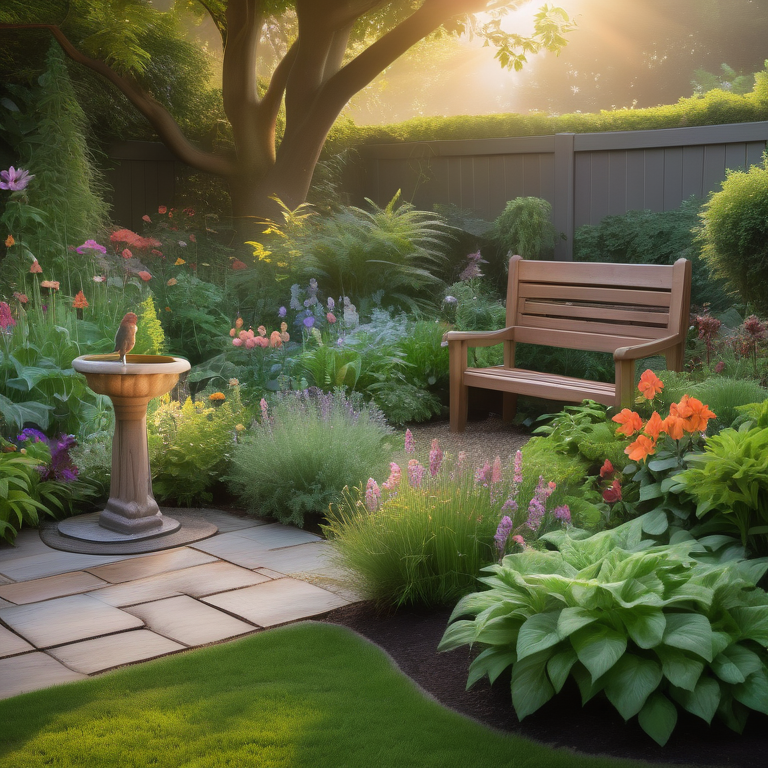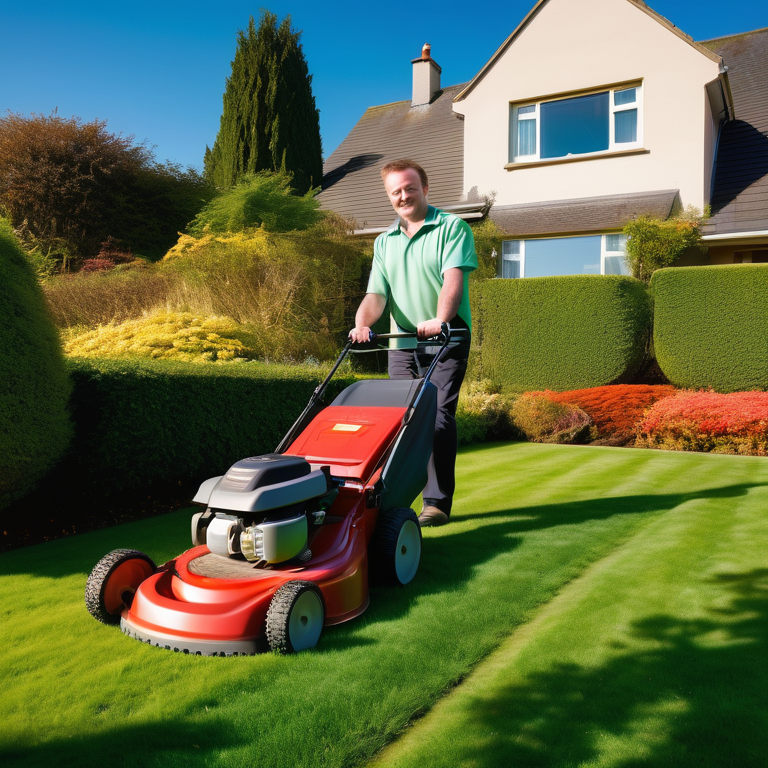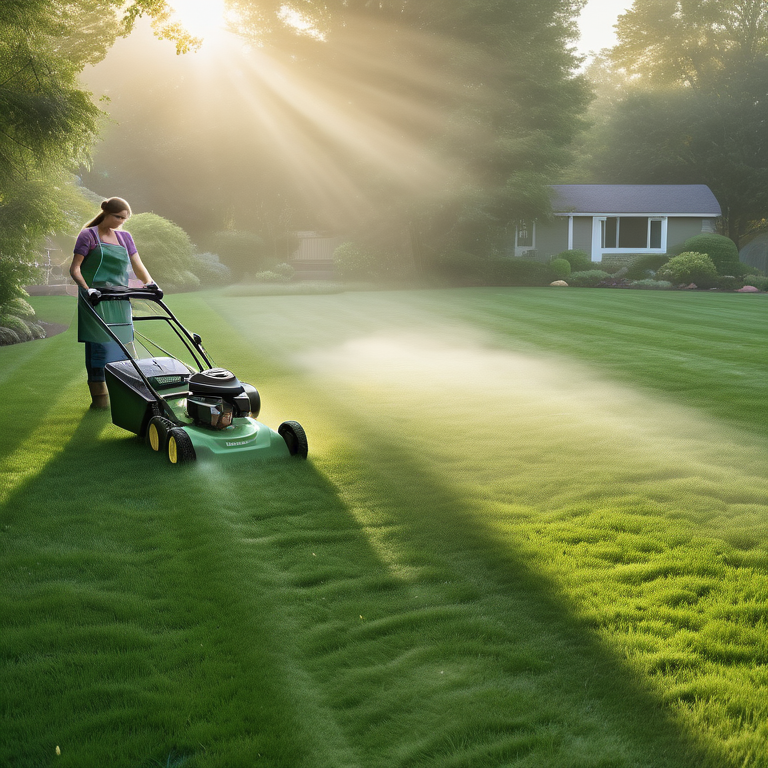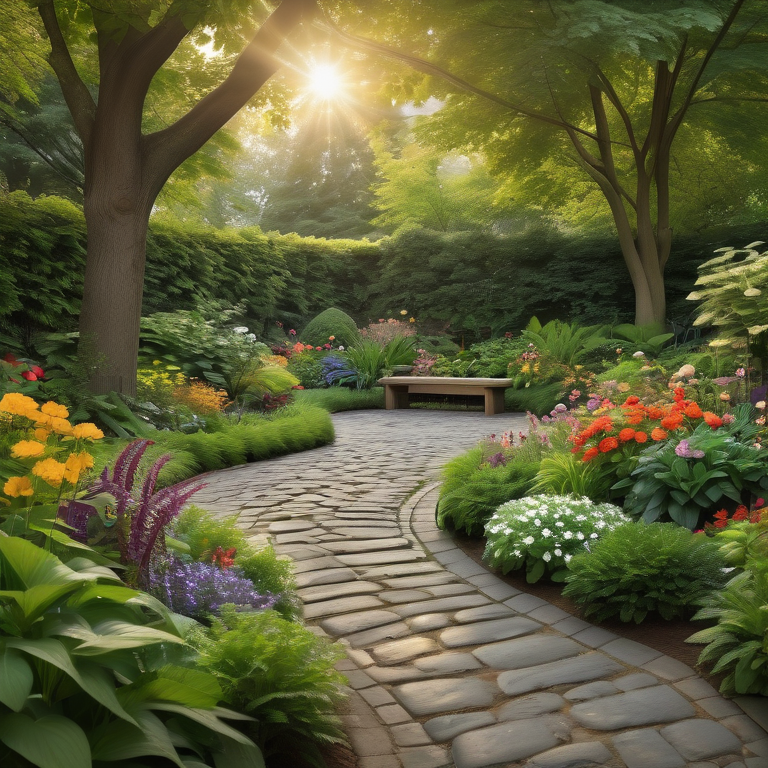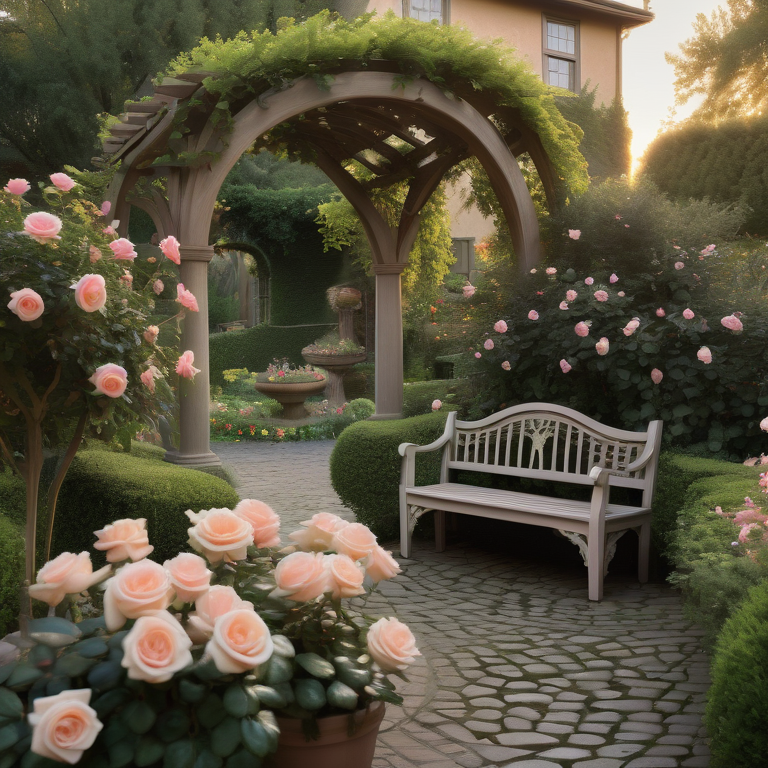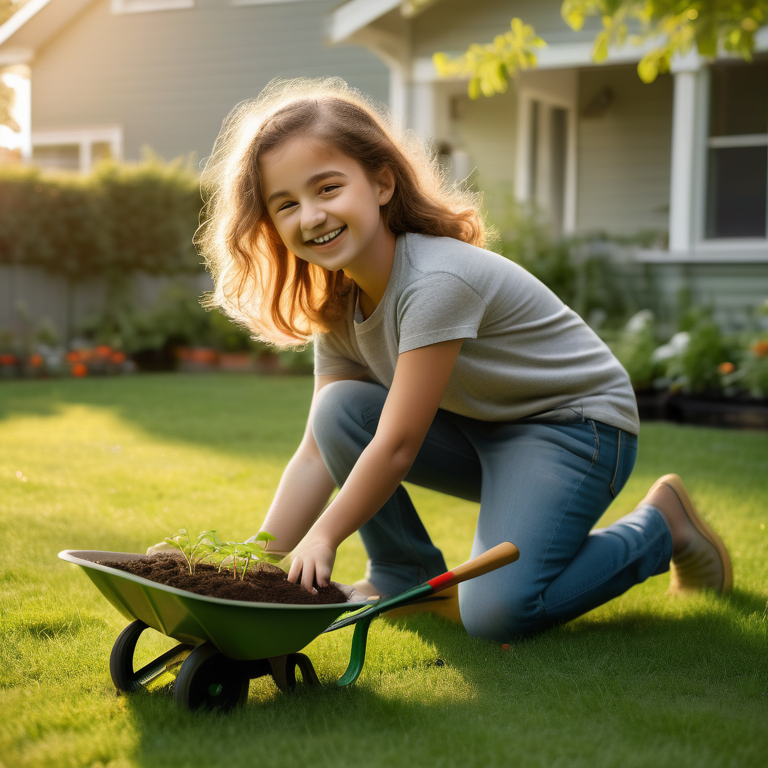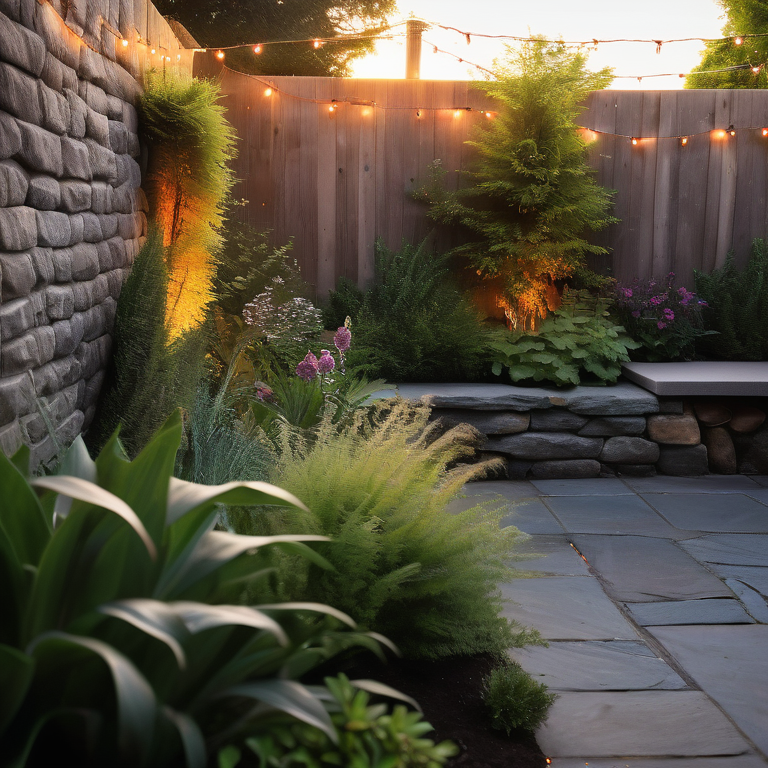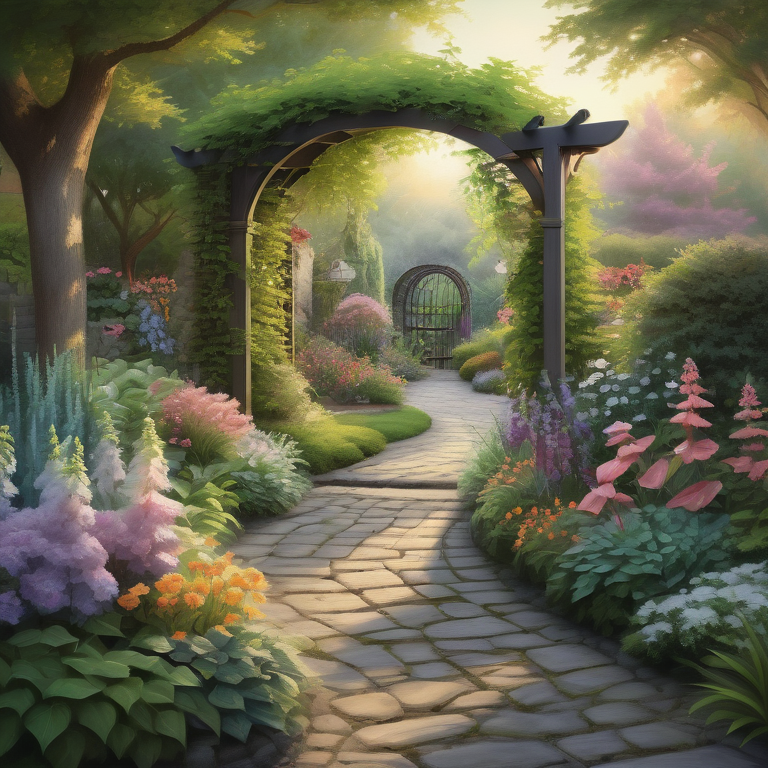What are the benefits of having an east-facing garden?
East-facing gardens get gentle morning sun, making them perfect for plants that prefer cooler conditions. They’re ideal for enjoying breakfast outdoors and provide a lovely space for shade-loving plants. Additionally, east-facing gardens typically stay cooler in the afternoons compared to west-facing gardens.
Key Highlights
- Understanding the direction and aspect of your garden is essential for designing an east facing garden
- An east facing garden receives most of its sunlight in the morning, making it cooler in the afternoon
- The benefits of an east facing garden include the opportunity to grow shade-loving plants and enjoying the morning sun
- Challenges of an east facing garden include limited plant choices and the need for proper moisture management
- Designing an east facing garden can be done by incorporating lighting, creating a breakfast bar, and selecting plants that thrive in partial shade
- Consider adding a shed in the shade and hanging bird feeders to attract birds to your east facing garden.
Introduction
An east facing garden may not be the most popular choice among homeowners, but it can offer unique opportunities for creating a beautiful and productive outdoor space. While a south facing garden is often preferred for its prolonged sun exposure, an east facing garden has its own benefits. With careful planning and design, you can make the most of the morning sunlight and partial shade provided by an east facing garden, avoiding the potential damage of too much sun.
In this blog, we will explore the key highlights of designing an east facing garden, understand what an east facing garden is, discuss the benefits and challenges it presents, and provide tips for getting started with your own east facing garden. Whether you’re a seasoned gardener or a beginner, this guide will help you make the most of your east facing garden and create a stunning outdoor space. Don’t forget to leave your email to receive our free lawn calendar for important maintenance reminders throughout the year.
Understanding East Facing Gardens
An east facing garden is a garden that faces towards the east, receiving most of its sunlight during the morning hours. This orientation can be on the east side of a building, fence, or wall, or it can be an open garden that faces towards the east. The morning sunlight in an east facing garden makes it cooler in the afternoon compared to gardens that face south or west. This can be beneficial for plants that prefer cooler temperatures, but it can also limit the types of plants that can be grown in the garden.
The Science of Sunlight and Shade
Understanding the science of sunlight and shade is crucial when designing an east facing garden. Sunlight can be categorized into full sun, partial shade, and full shade. In an east facing garden, the morning sunlight provides a cooler and less intense light compared to the afternoon sun. This gradual warming up of plants in the morning can help them grow stronger and healthier.
Partial shade is ideal for shade-loving plants, which thrive in areas with limited direct sunlight and add a pop of colour to your garden. It’s important to consider the specific conditions of your east facing garden, such as the amount of shade, moisture, and soil quality, in order to select the right plants for your garden. By strategically placing plants that can tolerate partial shade and cooler temperatures, you can create a balanced and thriving garden. www.wicklowlandscaping.ie
Benefits of Having an East-Facing Garden
Having an east-facing garden comes with its own set of benefits. One of the main advantages is the abundance of morning sunlight. This gentle morning sun allows plants to gradually warm up, promoting healthy growth. Additionally, the cooler temperatures in the afternoon make it more comfortable for gardeners to work in the garden during the summer months.
Another benefit of an east-facing garden is the opportunity to grow shade-loving plants. These plants thrive in partial or full shade and can add a unique touch to your garden. An east facing garden also provides natural protection against intense afternoon sun, making it easier to incorporate landscaping elements such as trees, shrubs, and other plants. This can add depth and dimension to your garden design, making it a beautiful and functional space.
By taking advantage of the morning sun and selecting the right plants that can thrive in partial shade, you can create a stunning and vibrant outdoor space in your east-facing garden.
Key Takeaways on East Facing Garden Design
Designing an east facing garden requires careful consideration of the unique characteristics and challenges it presents. Some key takeaways for designing an east facing garden include understanding the direction and aspect of your garden, selecting plants that can tolerate partial shade and cooler temperatures, incorporating garden lighting for evening enjoyment, and creating a breakfast bar to make the most of the morning sun. By embracing the benefits and challenges of an east facing garden, you can create a beautiful and thriving outdoor space. www.wicklowlandscaping.ie
What is Known About East Facing Gardens
East facing gardens are often situated at the back of the house, facing towards the east. This orientation allows the garden to receive most of its sunlight in the morning, making it cooler in the afternoon. Compared to north or south facing gardens, east facing gardens have unique characteristics that need to be considered when designing and planting.
In terms of sun exposure, east facing gardens provide ideal conditions for shade-loving plants. The partial sun throughout the day allows these plants to thrive without being exposed to intense afternoon sun. Additionally, the cooler temperatures in the afternoon can be beneficial for plants that prefer cooler conditions.
When planning your garden, it is essential to take into account the specific conditions of your east facing garden, such as the amount of shade, moisture, and soil quality, in order to select the right plants and create a beautiful and thriving outdoor space.
Uncovering the Unknown: Challenges and Solutions
While there are many advantages to having an east facing garden, there are also challenges that need to be addressed. Some of the challenges of an east facing garden include limited plant choices, cooler afternoons and evenings, and moisture retention. However, by understanding the disadvantages and finding solutions, these challenges can be overcome.
- Limited plant choices: Many fruit and vegetable plants require more sun than an east facing garden can provide. However, there are still plenty of shade-loving plants that can thrive in an east facing garden.
- Cooler afternoons and evenings: The lack of direct sunlight in the afternoon can result in cooler temperatures in an east facing garden. This can be addressed by creating cozy seating areas and incorporating outdoor heating options such as fire pits.
- Moisture retention: East facing gardens may be prone to retaining moisture due to the limited sunlight. Proper drainage and regular watering schedules can help address this issue.
By understanding and addressing these challenges, you can create a thriving and beautiful garden in your east facing outdoor space. www.wicklowlandscaping.ie
Getting Started with Your East Facing Garden
Getting started with your east facing garden involves understanding the aspect of your garden, preparing the soil, and selecting the right plants. By determining the direction your garden faces, whether it’s east or another orientation, you can make informed decisions about the types of plants that will thrive in your garden. Additionally, evaluating the soil quality and sunlight patterns in your garden will help you create the optimal growing conditions for your plants. Consider consulting with a garden designer or using resources such as compass apps to ensure accurate assessment and planning. If you have a north facing garden, be sure to check out my other guides for tips on selecting the best plants for that specific orientation.
Essential Equipment and Resources
To ensure the success of your east facing garden, it’s important to have the right equipment and resources. Regular watering is essential, so investing in watering cans or a hose with a sprinkler attachment is necessary. Additionally, having plenty of plants and gardening tools will allow you to create a lush and beautiful outdoor space. Consider using compost and other organic materials to improve soil quality and provide nutrients to your plants. Gardening books and online resources can also be valuable references for learning more about specific plants and gardening techniques suited for east facing gardens.
Evaluating Soil Quality and Sunlight Patterns
Evaluating the soil quality and sunlight patterns in your east facing garden is crucial for successful plant growth. The morning sunlight in an east facing garden provides a unique lighting condition that can affect plant growth. Determining the intensity and duration of the morning sun can help you select plants that will thrive in your garden.
To evaluate soil quality, consider conducting a soil test to determine the pH level and nutrient content of your soil. This information will guide you in making any necessary amendments to create optimal growing conditions for your plants. Additionally, observe the sunlight patterns throughout the day to identify areas with direct sunlight, partial shade, and full shade. This will help you determine the best placement for different types of plants in your east facing garden.
Step-by-Step Guide to Designing Your Garden
Designing your east facing garden involves several steps, including planning your layout, selecting plants for specific sunlight conditions, incorporating shade-loving plants, and maximizing space with vertical gardening. By following a step-by-step approach, you can create a harmonious and visually appealing outdoor space that takes advantage of the unique characteristics of an east facing garden with the help of Bord Bia’s Easy Steps to Dream Gardens initiative. www.wicklowlandscaping.ie
Step 1: Planning Your Layout
When planning your layout for an east facing garden, consider the orientation of your garden, the available outdoor space, and any existing structures such as walls or fences. Determine the areas of your garden that receive the most sunlight and those that are shaded during different times of the day. This will help you identify suitable locations for different types of plants. Additionally, consider incorporating wall lights or other lighting features to enhance the ambiance of your back garden during the evening hours. Creating different zones within your garden, such as seating areas or flower beds, can also add interest and functionality to your outdoor space. www.wicklowlandscaping.ie
Step 2: Selecting Plants for Morning Sunlight
In an east facing garden, plants that can tolerate partial shade and cooler temperatures thrive the best. Choose plants that enjoy morning sun exposure and can handle the limited direct sunlight in the afternoon. Some examples of plants that do well in an east facing garden include perennials with white flowers, which can brighten up the space, and shrubs that thrive in partial shade and add color. Consider incorporating a variety of plants with different textures and heights to create visual interest in your garden. Researching the specific sunlight and soil requirements of different plant species will help you make informed choices when selecting plants for your east facing garden. www.wicklowlandscaping.ie
Step 3: Incorporating Shade-Loving Plants
One of the advantages of an east facing garden is the opportunity to grow shade-loving plants. These plants thrive in areas with limited direct sunlight and can add depth and texture to your garden. Consider incorporating plants such as ferns, brunnera, and hostas, which are known for their ability to thrive in partial or full shade. These plants not only add visual interest to your garden but also provide a cool and calming atmosphere. By strategically placing shade-loving plants in areas of your east facing garden with limited direct sunlight, you can create a lush and vibrant outdoor space. www.wicklowlandscaping.ie
Step 4: Maximizing Space with Vertical Gardening
In an east facing garden where space may be limited, maximizing vertical space can be a great way to add more plants and create visual interest. Consider incorporating vertical gardening techniques such as trellises, pergolas, and hanging baskets. These allow you to grow plants upward, making the most of your available space. Climbing plants like clematis and ivy can add a vertical element to your garden, while hanging baskets filled with trailing plants can create a cascading effect. Vertical gardening not only adds beauty but also helps create a more efficient and productive garden.
Ideal Plants for East Facing Gardens
Selecting the right plants for an east facing garden is crucial for successful growth and a thriving outdoor space. Consider plants that thrive in partial shade and cooler temperatures, taking advantage of the morning sunlight in an east facing garden. Perennials with white flowers and shrubs that can tolerate partial shade are great choices. Additionally, shade-loving plants like ferns and hostas can add depth and texture to your garden, while also providing interesting foliage. By selecting the ideal plants for your east facing garden, you can create a beautiful and vibrant outdoor space. www.wicklowlandscaping.ie
Perennials that Thrive in Morning Light
Perennials that thrive in morning light are perfect for an east facing garden. These plants can handle the limited direct sunlight in the afternoon and enjoy the cooler temperatures. Consider planting perennials with white flowers, such as astilbes and bleeding hearts, that bloom in mid to late summer and add a touch of color and texture to your garden. These plants not only brighten up the garden but also add a touch of elegance. Other perennials that do well in morning light include anemones and brunnera. By incorporating these perennials into your east facing garden, you can create a beautiful and flourishing outdoor space. www.wicklowlandscaping.ie
Best Shrubs for Partial Shade
When choosing shrubs for an east facing garden, it’s important to consider their ability to tolerate partial shade and cooler temperatures. Some of the best shrubs for partial shade include hydrangeas, rhododendrons, and heuchera. These shrubs thrive in areas with limited direct sunlight and add color and texture to your garden. Additionally, consider incorporating evergreen shrubs like holly and brunnera, which provide year-round interest with their stunning shades of green. By selecting shrubs that can tolerate partial shade, you can create a visually appealing and low-maintenance garden in your east facing outdoor space.
Vegetable Gardening in an East Facing Yard
While an east facing garden presents some challenges for growing vegetables, there are still plenty of options for successful vegetable gardening. With careful planning and plant selection, you can grow a variety of vegetables in your east facing yard. Consider vegetables that can tolerate partial shade and cooler temperatures, such as leafy greens like lettuce and spinach, broccoli and cauliflower, root vegetables like carrots and radishes, and herbs like cilantro and chives. By selecting the right vegetables and providing them with the proper growing conditions, you can enjoy a bountiful vegetable garden in your east facing yard.
Top Vegetables for Morning Sun and Afternoon Shade
When it comes to vegetable gardening in an east facing yard, there are several options that can thrive in the morning sun and afternoon shade. Here are some top vegetables to consider for your east facing garden:
|
Vegetable |
Sunlight Requirements |
|
Spinach |
Partial shade |
|
Lettuce |
Partial shade/full sun |
|
Broccoli |
Partial shade/full sun |
These vegetables can tolerate cooler temperatures and partial shade, making them well-suited for an east facing garden. By providing them with regular watering and proper care, you can enjoy a successful vegetable garden in your east facing yard. www.wicklowlandscaping.ie
Tips for Planting and Harvesting
When planting and harvesting vegetables in an east facing garden, it’s important to consider the specific sunlight and temperature requirements of each vegetable. Start planting in early spring when the temperatures are cooler and the morning sun is still gentle. This will allow the vegetables to establish themselves before the hotter summer months. Provide regular watering and ensure proper drainage to prevent waterlogging in the cooler areas of your garden. Harvest your vegetables in early morning or late afternoon when the temperatures are cooler and the plants are less stressed. Compost the leftover plant material to improve soil fertility for future plantings. By following these tips, you can maximize the productivity of your vegetable garden in your east facing yard. www.wicklowlandscaping.ie
Maintaining Your East Facing Garden
Maintaining an east facing garden involves regular watering, pruning, and care throughout the seasons. Since an east facing garden may retain more moisture, it’s important to establish a watering schedule to prevent issues such as mold and mildew. Pruning should be done to maintain the shape and health of the plants, and it’s essential to adjust pruning techniques based on the specific requirements of each plant. Additionally, care should be taken to remove any fallen leaves or debris to maintain a clean and healthy garden throughout the seasons. www.wicklowlandscaping.ie
Watering Schedules for Optimal Growth
Establishing a watering schedule is crucial for optimal growth and health of your plants in an east facing garden. Since moisture retention can be a challenge in these gardens, it’s important to provide regular watering to prevent issues such as mold and mildew. Watering in the early morning is recommended to allow the plants to absorb the moisture before the heat of the day. Avoid watering in the evening as the leaves may stay wet for longer periods, increasing the risk of fungal diseases. Adjust the watering schedule based on the specific needs of your plants and the existing soil conditions. Regularly monitor the moisture levels and adjust the watering frequency as necessary to ensure the optimal growth of your plants. www.wicklowlandscaping.ie
Pruning and Care Throughout the Seasons
Pruning and care are important aspects of maintaining an east facing garden throughout the seasons. Regular pruning helps maintain the shape and health of the plants. It’s important to prune at the appropriate time for each plant, taking into consideration their specific requirements. Some plants may benefit from pruning in the early spring, while others may require pruning after the flowering season. Additionally, remove any fallen leaves or debris to maintain a clean and healthy garden. Throughout the seasons, monitor the overall health of your plants and address any pest or disease issues promptly. By providing regular care and maintenance, you can ensure the long-term health and beauty of your east facing garden.
Conclusion
In conclusion, designing an East facing garden involves understanding sunlight patterns, selecting suitable plants, and maintaining optimal care. Harnessing the benefits of morning sunlight and incorporating shade-loving plants can create a vibrant outdoor space. By following a step-by-step guide and choosing the right vegetation, you can maximize the potential of your garden. Regular watering, pruning, and attention to soil quality are essential for sustaining healthy growth. Whether you are a beginner or seasoned gardener, creating a thriving East facing garden is a rewarding experience that brings beauty and tranquility to your home. www.wicklowlandscaping.ie
Frequently Asked Questions
What Makes www.wicklowlandscaping.ie a Great Option for East Facing Gardens?
www.wicklowlandscaping.ie is a great option for designing and maintaining east facing gardens. Their experienced garden designers understand the specific requirements of east facing gardens and can create customized designs to maximize the potential of your outdoor space. With their expertise and knowledge, they can help you transform your east facing garden into a stunning and thriving outdoor oasis.
